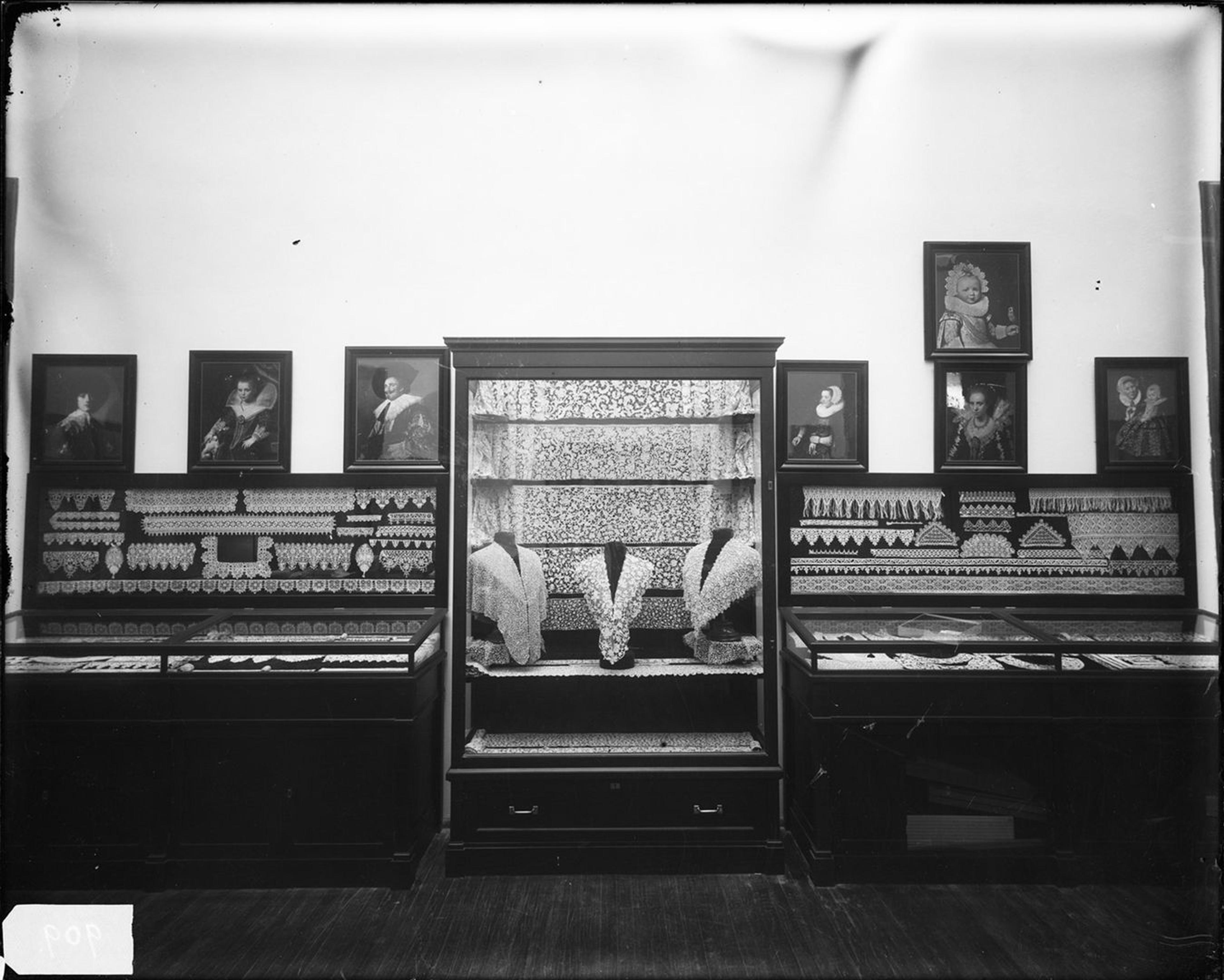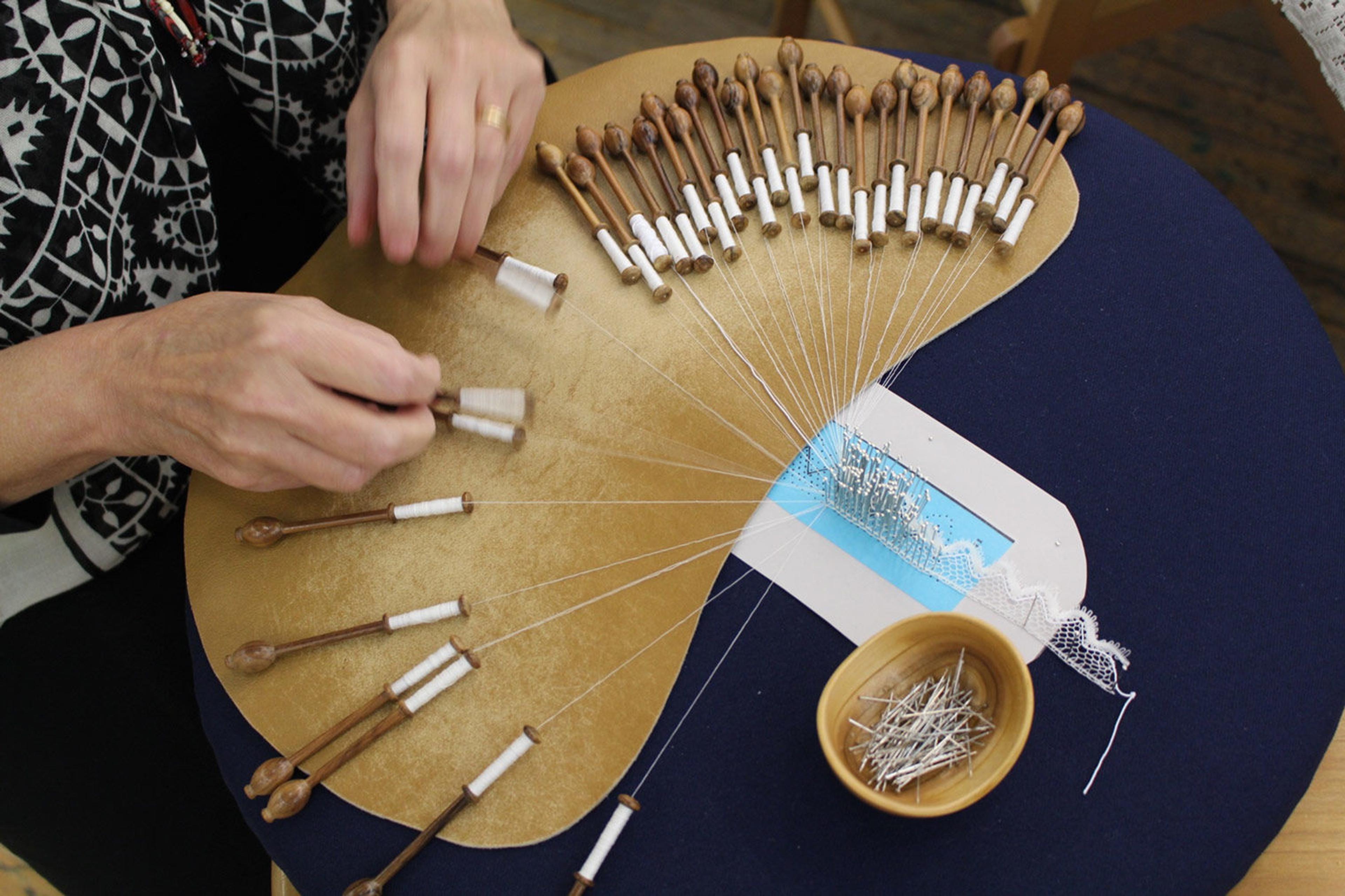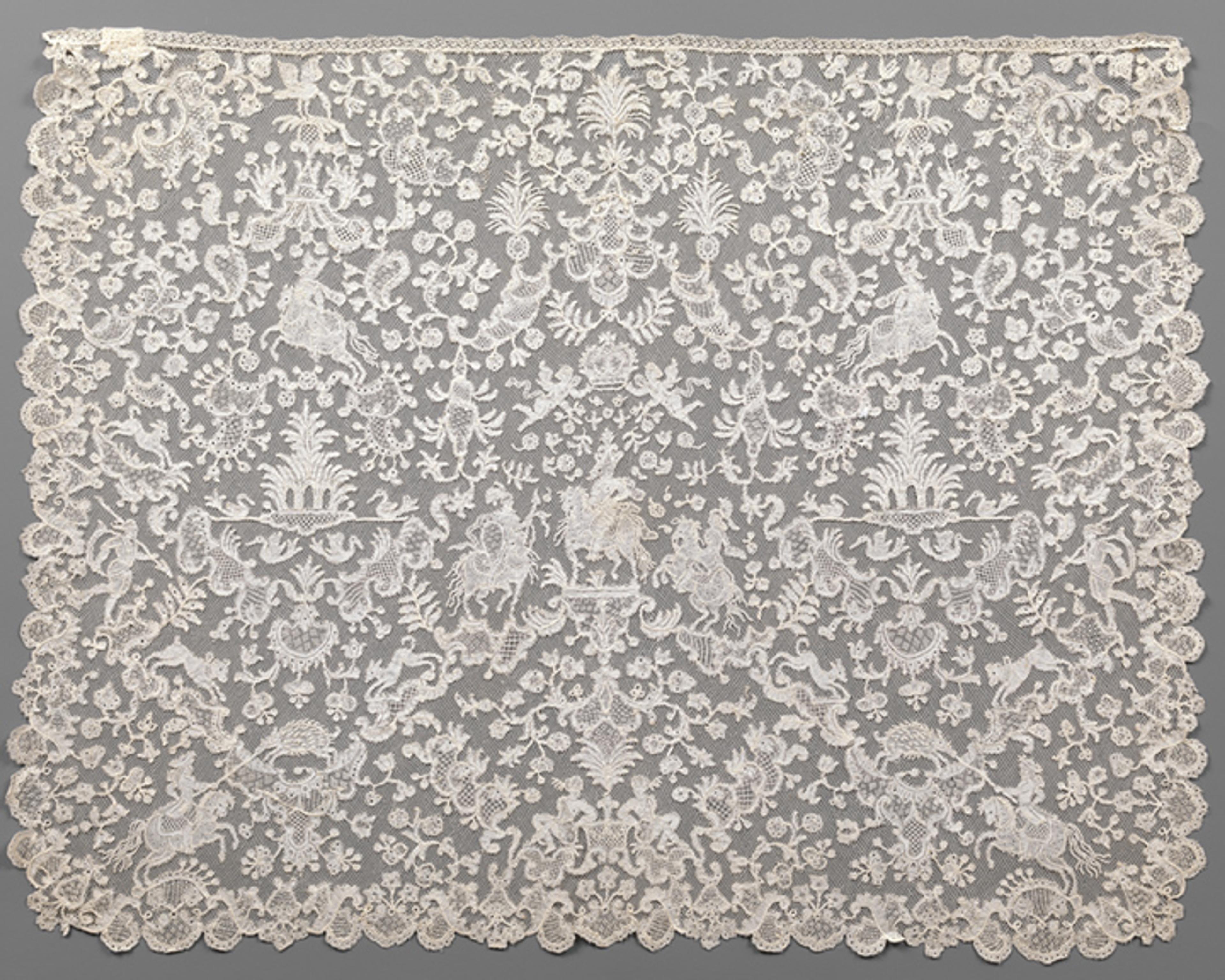Gertrude Whiting's Bobbin-Lace Sampler and the Connoisseurship of Lace

Gertrude Whiting (died ca. 1951). Sampler of bobbin lace, 1912–17. Frame: 34 1/2 x 47 in. (87.6 x 119.4 cm); lace (sight): 19 x 23 in. (48.3 x 58.4 cm). The Metropolitan Museum of Art, New York, Bequest of Gertrude Whiting, 1951 (51.113). Photo by the author
Not all of the objects in The Met collection have been preserved for their aesthetic value. For nearly 150 years, The Met has served as a "library of art" supporting scholarly research into the fields of fine, decorative, and applied arts. To this end, some objects have been preserved because of what we can learn from them. One such example is a sampler of bobbin lace made by Gertrude Whiting between 1912 and 1917, which she bequeathed to The Met in 1951. Whiting contributed enormously to the understanding of handmade lace during her lifetime. She was a rigorous maker and scholar who pioneered lace research a century before "making and knowing" became a buzzworthy topic in academia.
Born in New York in 1882, Whiting was introduced to the world of lace as a young girl by her aunt, and her interest was further piqued by seeing delicate openwork fabric exhibited in museums. A well-educated young woman, she completed college in Virginia before traveling to study needle arts in Switzerland, England, and Nova Scotia. Upon her return to New York City, she discovered that passion for lace was not as widespread in the US as she had found it in Europe, and she determined to structure an association of lace connoisseurs. Whiting approached Frances Morris, then the assistant curator of textiles at The Met, about founding a guild. Morris, in turn, reached out to fellow lace aficionados, who replied with enthusiasm. And thus, in 1916, The Needle and Bobbin Club was formed.
Thanks to Whiting's connection with Morris, the history of The Needle and Bobbin Club is intertwined with that of The Met. The guild's first meeting was held at the Museum on February 8, 1916, and The Metropolitan Museum of Art Bulletin soon after reported that the club already had two hundred members in its first year. Second only to Gertrude Whiting, Frances Morris played perhaps the largest role in the success of The Needle and Bobbin Club. In 1896, she became the first woman to be employed in a professional role at The Met. Her original focus was on musical instruments, as she had been brought on to catalogue The Crosby Brown Collection of Musical Instruments in 1896, but in 1905 her responsibilities expanded to include textiles. In 1910, she was given the official title of assistant curator, and she took charge of the newly founded Textile Study Room.

The Lace Room at The Met. Photographed 1907
Lace made up a substantial portion of the Museum's early textile collection. Members of New York City's elite, such as Mrs. John Jacob Astor and Mrs. J. Pierpont Morgan, were avid collectors of lace and often donated their collections to the Museum. A 1932 Fortune magazine article on famous lace collectors from the previous century proclaimed: "lace is to his wife what Rembrandts are to the U.S. financier."[1] Members of European and American high society were also involved in philanthropic efforts to promote lacemaking schools such as the Scuola D'Industrie Italiane in New York City.
In 1906, The Met opened a "Lace Room" to showcase seven hundred objects from the collection. Due to its immense popularity, by 1917 it was reinstalled with all three thousand pieces of lace then in the Museum's collection. Frances Morris wrote in the Bulletin that the new lace gallery was intended "not only to give pleasure to the casual visitor but as well to be of service to those who desire to study the fabrics from a technical or an historical standpoint."[2]

Gertrude Whiting (died ca. 1951). Sampler of bobbin lace (detail). Photo by the author
Bobbin lace is a traditional method of making lace that evolved out of braiding techniques, and is widely believed to have originated in early sixteenth-century Italy. To produce bobbin lace, thread is wound onto cylindrical bobbins, which are attached to a pillow on top of a pattern. Pairs of bobbins are then crossed and twisted, following the design, and secured with pins. Over time, the technique evolved to enable the creation of increasingly complex designs, while lacemaking regions across Europe developed distinct stylistic variations. Whiting's sampler is significant in that it incorporates dozens of these stitches into one concise document for comparative analysis. The sampler is mounted in a frame that also holds twenty-seven different lace bobbins of all different origins and materials, including everything from a typical "Old English Brass Spangled" to a more unusual "Modern Swiss Boxwood."

A volunteer at the Antonio Ratti Center illustrates the bobbin-lacemaking technique. Photo by the author
Whiting also wrote an "explanatory manual" to accompany the sampler, A Lace Guide for Makers and Collectors (1920), which includes detailed instructions for replicating each lace stitch as well as some geographical and historical context. The book also included a photographic reproduction of the entire sampler, printed to scale on linen, which is folded and tucked into a back pocket—an innovative precursor to books with accompanying CDs containing digital images in the late twentieth century.

Fragment, 16th century. Italian. Bobbin lace, 6 x 1 in. (15.2 x 2.5 cm). The Metropolitan Museum of Art, New York, The Nuttall Collection, Gift of Mrs. Magdalena Nuttall, 1908 (08.180.514)

Cravat end or rabat, mid-18th century. Flemish, Brussels. Linen, bobbin lace (point d'Angleterre), 13 1/4 x 17 1/16 in. (33.7 x 43.3 cm). The Metropolitan Museum of Art, New York, Purchase, Rogers Fund, 1926 (23.283)

Cravat end or rabat (detail), mid-18th century. Flemish, Brussels. Linen, bobbin lace (point d'Angleterre), 13 1/4 x 17 1/16 in. (33.7 x 43.3 cm). The Metropolitan Museum of Art, New York, Purchase, Rogers Fund, 1926 (23.283)
The diverse stitches included in the sampler include traditional grounds that would be familiar to most bobbin lacemakers, such as Mechlin and Droschel. The "Trude" grounds, which are labeled "(original) (American)," are Whiting's own designs and are contemporary in style. Along with the donation of the sampler, Whiting suggested in a letter that The Met keep "some books on hand for those who might care to buy them," to which the Museum agreed.
Whiting devoted her life to lacemaking and needle arts, and spent her later years traveling and working in Asia. In 1927, she founded the Whiting India Guilds, Inc., an organization that promoted lacemaking as a source of income in India and Tibet. She was not only well versed in the history of lace and an expert craftswoman, but also had the foresight to document and preserve lace knowledge for future generations. An article on Whiting's life in Needle Arts magazine from 1988 described her as "grounded in the conviction that a woman's creative work—sewing, embroidery, tapestry, and lacemaking—is a gift, a treasure of the soul as fine as any other great work of art. As a writer and philanthropist she had a missionary-like vision to improve the condition of women and the quality of their lives."[3]
Notes
[1] H. W. Wilson, "Gossamer trail of lace," Fortune 5, 56–119. Applied Science & Technology Index Retrospective: 1913–83 (1932).
[2] Francis Morris, "The Rearrangement of the Lace Collection," The Metropolitan Museum of Art Bulletin 5, no. 12 (December 1910), 285–87.
[3] Kathy Epstein, "Gertrude Whiting: A Woman's Work," Needle Arts (December 1988), 13.
Related Content
Gertrude Whiting's bobbin-lace sampler is accessible by appointment in the Antonio Ratti Textile Center and Reference Library.
Whiting's accompanying book, A Lace Guide for Makers and Collectors, is also available in the Ratti Center Library.
Read more Collection Spotlights on the Collection Insights blog.
Elena Kanagy-Loux
Elena Naomi Kanagy-Loux is a collections specialist at the Ratti Textile Center.